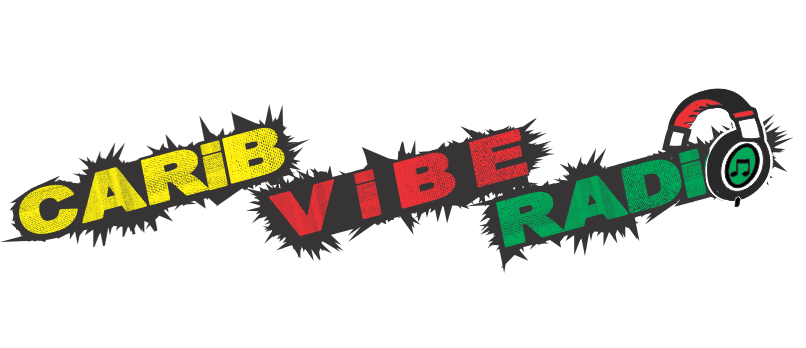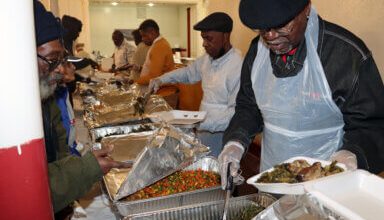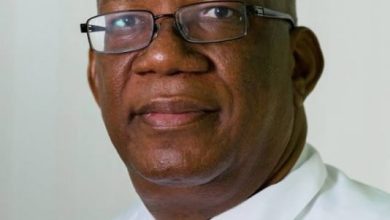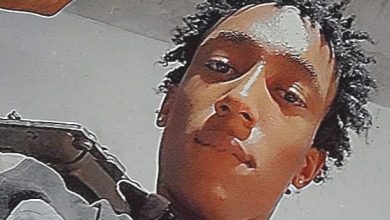Fully-loaded Hip-Hop History Month
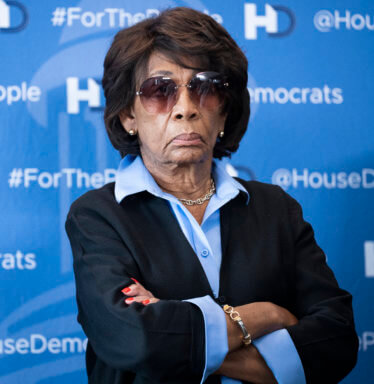
November is National Hip-Hop History Month.
One year after Congress adopted Resolution 331 — a bill co-sponsored by California Congresswoman Maxine Waters and NY Congressman Jamaal Bowman designated the significance of the music form – celebration of the Bronx-born music genre is in full effect.
Senator Charles Schumer ensured passage by the Senate resulting with wording stating “all states, cities and towns will observe the month.”
In an effort to acknowledge diversity, creativity, artistry and culture, Democrats lobbied to win 30 days devoted to bi-partisan revelry.
Uptown and downtown throughout New York City a preponderance of activities prevail with fashion, art and dance at the forefront.
At the Schomburg Center for Social Research, Harlem sets a stage for a month-long salute that provides a forum for understanding the origin of breakdancing, graffiti and the unique language an entire generation adhered.
Numerous panel discussions are slated with topics focusing on comic book creation, photographic exhibition and question and answer sessions with prominent players and representatives.
Female-focused nostalgia will be integrated.
At the Apollo Theater, Drake headlines a concert.
At the Far Rockaway branch of Queens Public Library local rapper MC Serch will likely demonstrate his technique.
The Source Magazine has been highlighting the genre with daily nostalgic notes honoring Today in Hip-Hop History.
Sirius Satelite has dedicated exclusive programming to feature ‘best of’ interviews from their archives.
In addition, media offerings celebrate limited edition rap releases from Rhino with weekly offering from vintage recorders such as Lil Kim, Notorious BIG, Sean Puffy Combs, Busta Rhymes, the Fat Boys and others.
Legend prevails that Aug. 11, 1973 a house party at 1520 Sedgwick Ave. lured Bronx residents to a “Back to School” jam.
There, Jamaican immigrant Clive Campbell aka DJ Kool Herc joined forces with his sister Cindy to entertain their guests.
His artistry featured music mixes using two turntables.
Simultaneously he rapped on a microphone; deejayed to a rhythmic beat he mimicked from his island, homeland and just like that a new music genre emerged.
Its evolution manifested with street dancers using the city sidewalk as a pavement to showcase flexibility, innovation and skill.
Further progressions advanced a culture that included artists who used spray paint to canvas their expressions on large billboards.
While some tagged signatures willy nilly — everywhere and anywhere — others used the subway to promote their artistry throughout the boroughs by creatively, painting graffiti across the cars.
Hip-hop permeated every social structure, even outselling rock music which for decades maintained a status for dominating sales at the marketplace.
Throughout its genesis, hip-hop quickly evolved with photography, books, films, influencing a global community that parodied the style.
There are those who credit the Zulu Nation for incorporating social consciousness to the form.
Filmmaker Fred “Fab 5 Freddy” Braithwaite elevated the form with the launching of Yo! MTV Raps, a music television program that neatly combined various facets of hip-hop.
And Ralph McDaniels capitalized on free cable access to promote young, impressarios, B-Boys and videos often ignored by mainstream outlets.
A hip-hop category was introduced to the Grammy Awards in 1989.
The premiere launched a Best Rap Performance contest that rewarded Will Smith and DJ Jazzy Jeff with a miniature golden, gramophone.
Five categories later Jay-Z and Kanye West are tied with possessions of 24 Grammy Awards.
They are also billionaires, moguls and rap legends.
Next year when the genre marks a 50-year anniversary, Rocky Bucano will open the Universal Hip-Hop Museum in the Bronx.
Now under construction, a plethora of historic artifacts will honor pioneers. Reportedly, fully supportive of Bucano’s initiative, rappers Curtis Blow, Ice-T, LL Cool J, and Nas are committed to the construction.
